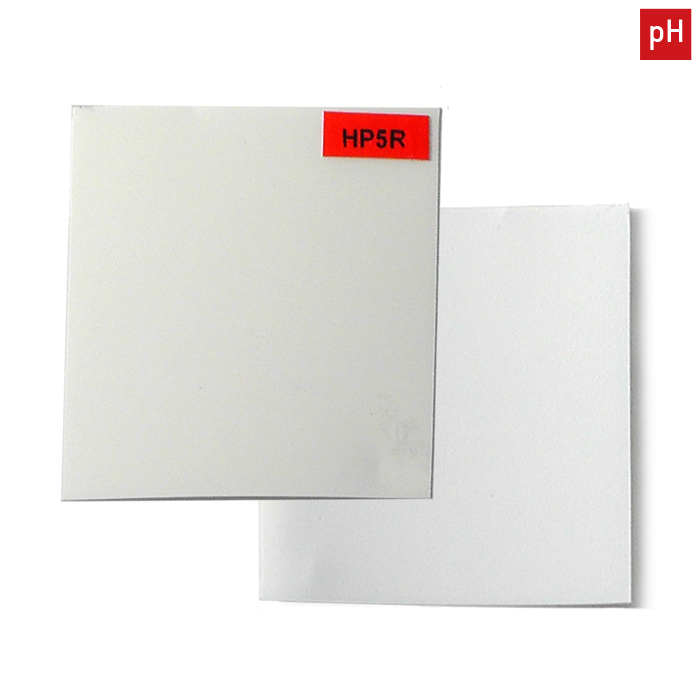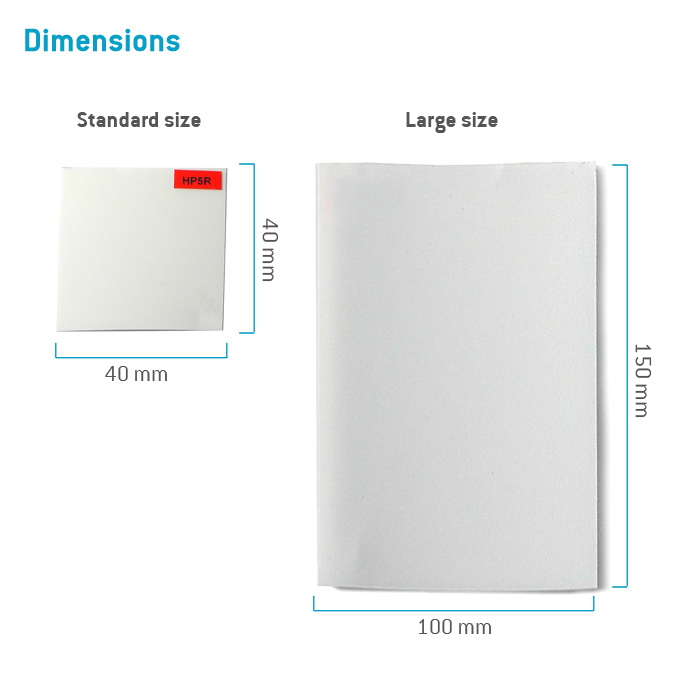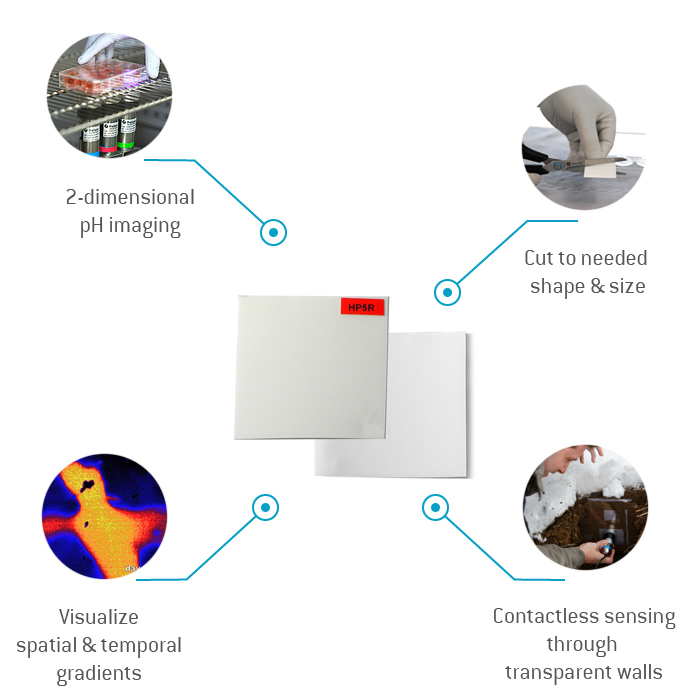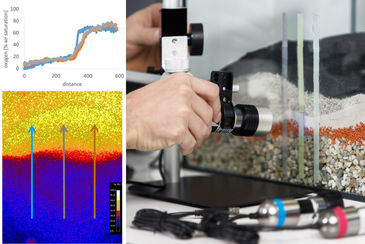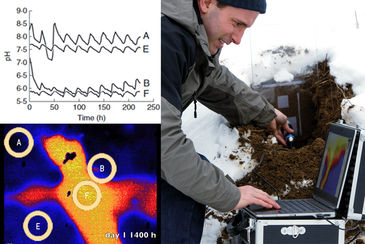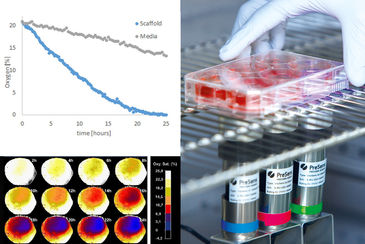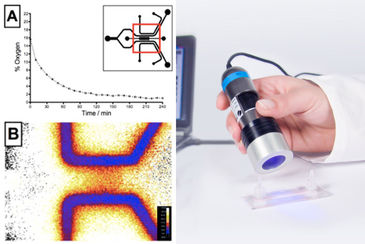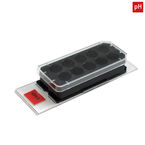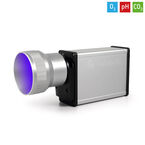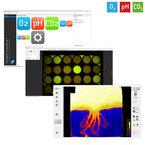Watch tutorials, webinars and informative videos about PreSens optical sensor systems.
pH Sensor Foils for 2-Dimensional Recording of pH Distributions
pH Sensor Foils SF-HP5R
The pH sensor foils allow non-invasive mapping of pH distributions in a low or normal pH measurement range. The fluorescent sensor foil is attached on the sample surface or a transparent vessel made of glass or plastic. For measurement, the sample surface is covered with a sensor film, which translates the spatial pH content into a light signal. The sensor foil is available in different sizes and can easily be cut in any desired shape. Read-out is done contactless with the imaging device unit DU02 or the VisiSens TD.
- 2D read-out
- Contactless, direct sensing or through transparent walls
- Visualize spatial and temporal gradients
- Numerous measurement points in one image
Applications
O2, pH and CO2 Mapping in Sediments
O2, pH, and CO2 are key factors for microbial activity and various geochemical processes in sediments. They highly vary locally, e.g. at interfaces or different depths. Spatial and temporal analyte dynamics over long time periods can be visualized. Various regions can be compared within one measurement. VisiSens enables non-invasive 2D-mapping over cross-sections or on sample surfaces. The portable device can be used in lab and field.
Spatial and Temporal Analyte Changes in Plants & Soil
O2, pH and CO2 play a crucial role in plant and soil processes, e. g. in photosynthesis, respiration, in rhizospheres or in microbiological processes. Metabolic processes can be monitored. This planar optical sensor technique allows non-invasive read-out through glass walls of rhizotrons. Studying metabolic activity of roots and determining the cultivation optimum is important for sustainable agriculture, e. g. for adjustment of water and fertilizer supply.
O2 or pH in Cell Culture and Engineered Tissue
Cellular metabolism critically depends on local O2 supply and pH values. Especially in 2D and 3D cell culture or engineered tissue, cells located in diffusion limited regions (e.g. in scaffolds or spheroids) can be subject to low oxygen levels and pH changes. Non-invasive, continuous 2D-mapping can be performed directly in the incubator under growth conditions. Furthermore, 2D analyte distributions in living samples can be visualized.
Non-invasive 2D Analyte Mapping in Microfluidics
VisiSens™ enables 2D visualization of important culture parameters inside microfluidic chips. You can continuously monitor in 2D, with high resolution at specific positions or over the whole chip surface in a non-contact readout mode. Detect metabolic hotspots, record time-series, and monitor hypoxia, cellular growth, or O2 supply inside the chip. You can gain new insights on metabolic activity and natural or artificially produced gradients.
Technical
| Specifications* | |
|---|---|
| * VisiSens™ is no approved medical device ** typical data which may strongly differ with adapting the imaging set-up to specific needs *** typical data of precision of a defined ROI (> 6,000 pixels) over time at 20 °C, excluded ambient light, FoV 8 cm x 6 cm, measured with VisiSens TD, data with VisiSens DU02 may storngly differ **** typical data of spatial standard deviation in defined ROI > 6,000 pixels at 20 °C, excluded ambient light, FoV 8 cm x 6 cm, measured with VisiSens TD, data with VisiSens DUO2 may strongly differ | |
| Measurement range | pH 5.5 - 7.5 |
| Response time (t90)** | < 30 sec. |
| Specifications using VisiSens TD read-out | |
| Precision (temporal)*** | ± 0.01 pH at pH = 7 |
| Precision (spatial)**** | ± 0.1 pH at pH = 7 |
| Properties | |
| Compatibility | Aqueous solutions, pH 2- 9 |
| General sensor temperature working range | from + 5 to + 45 °C |
| Size of sensor foil | 5 x 5 mm2 to 40 x 40 mm2 |
Related products
Resources
Publications
FAQs
Manuals
pH Sensor Foils SF-HP5R & SF-LV1R
Detector Units DU01 / DU02 / DU03
VisiSens AnalytiCal 3
Getting Started: CaliPlates
Media
Video: How2 Measure and Visualize O2, pH & CO2 Distributions in 2D for Biological Research
Video: How2 Measure and Visualize O2, pH & CO2 Distributions in 2D for Life Science Research
Video: VisiSens Delivered Equipment
Video: VisiSens WEBINAR - O2, pH & CO2 in Sediments, Interfaces and Biofilms
Video: VisiSens WEBINAR - O2, pH & CO2 in Plants, Roots and Soil
Video: VisiSens WEBINAR - O2 & pH in Cell Culture, Engineered & Native Tissue

